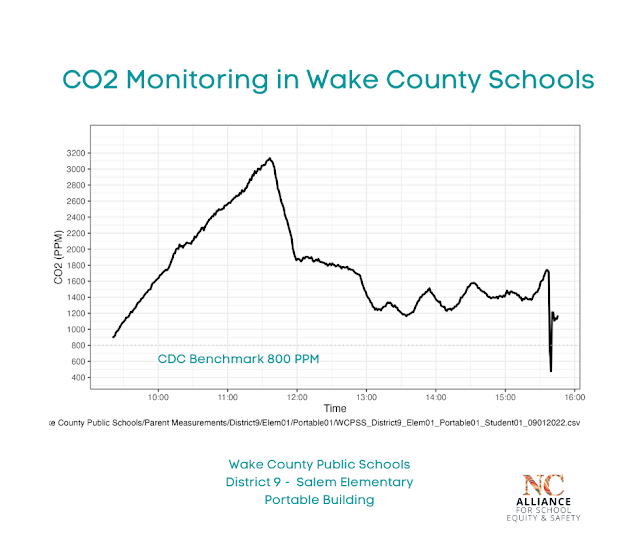WCPSS May Not Meet NC's Outdated Minimum Ventilation Standards
.png)
Guest Post by Edderic Ugaddan, Senior Data Scientist, Quant at People's CDC We show that for this particular classroom, WCPSS doesn’t appear to meet NC’s outdated minimum ventilation standards of 7.5 CFM/person. How? We use CO2 readings. People exhale a lot of CO2. How high CO2 concentrations go in a room is affected by the ventilation rate, occupancy of the room, activity of the individuals, and age. https://t.co/McbXYFZv3l For this classroom which had 17 3rd graders and 1 teacher, to meet code of 7.5 CFM/person, we expect the steady-state CO2 concentration (i.e. horizontally flat section) to be just below 1500ppm (see red line) The blue line is the CO2 curve associated with the more modern ASHRAE 62.1-2022 ventilation standard for classrooms of ~13-15 CFM/person, which is code in most places. However, in the first few hours in this graph, the recorded CO2 concentration was above the 1500 ppm limit line, even reaching more than 2x the limit! Occupancy stayed the same (16 3rd grad...
.png)

.png)